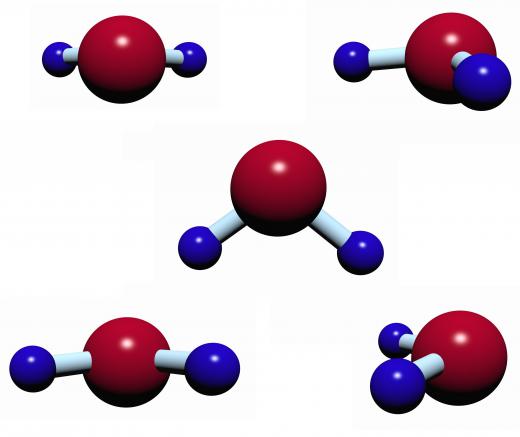At AllTheScience, we're committed to delivering accurate, trustworthy information. Our expert-authored content is rigorously fact-checked and sourced from credible authorities. Discover how we uphold the highest standards in providing you with reliable knowledge.
What Is Residence Time?
A residence time is the amount of time a substance or particle stays in a particular area or system. In science, there are generally water residence times and atmospheric residence times. All relate to various cycles of the Earth, the most prevalent of which is the water cycle. Understanding these residence times could help provide solutions for problems such as water pollution and global warming. Residence times vary for different types of molecules, and the conditions or medium of the substance.
There are two ways in which particles or molecules generally change residences, dry deposition and wet deposition. In dry deposition, the molecule or particulate moves to the earth's surface from the atmosphere without the help of precipitation. Wet deposition, as the name suggests, uses precipitation to remove various things from the atmosphere and carry them to the earth's surface, where they may fall on dry land or into bodies of water such as lakes, rivers and oceans.

One of the easiest ways to understand residence times is to look at a molecule of water and how long, on average, it may stay in a particular state. Soil moisture generally has a residence time of one to two months, for instance. On the other hand, deep groundwater may have a residence time of up to 10,000 years. In the ocean, the average residence time for a water molecule is 37,000 years, but this depends on a number of factors. Water near the surface could evaporate much more rapidly than water near the sea bottom.
While the residence times of a water molecule may not be a big deal, understanding the concept could help scientists with other issues. For example, the residence time of a carbon dioxide molecule in the atmosphere is approximately five years. After that time, it generally moves to another location, typically the ocean. Understanding how long carbon dioxide remains in the atmosphere gives scientists some clues for its removal and sequestration. It could be possible, once the technology is developed, to start having a significant impact on carbon dioxide levels in the atmosphere nearly immediately.
Also understanding residence times could help scientists unlock clues about the past. For example, if scientists know the residence time of water in an ice sheet, they can use that information to determine what conditions were like when the water was last in liquid form. That could provide answers about the Earth's past, such as atmospheric conditions and even what animals may have been alive during a certain time period.
AS FEATURED ON:
AS FEATURED ON:











Discuss this Article
Post your comments